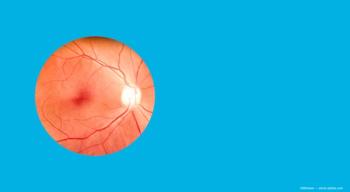
Solid-state laser can achieve excellent results for high, mixed astigmatism
An analysis of results achieved from performing LASIK with a 213-nm solid-state refractive laser (Pulzar Z1, CustomVis) in 10 eyes with high and mixed astigmatism (mean astigmatism, –5.2 D) demonstrate its safety, predictability, and efficacy. Uncorrected visual acuity after a minimum of 8 weeks' follow-up was 20/30 or better in 100% of eyes.
Keypoints:
Dr. Pujara summarized outcomes for a consecutive series of 10 eyes in nine patients treated between April and August 2006. All had high astigmatism (range –4 to –6.50 D, mean –5.2 D), and spherical error ranged from –4 to 4.75 D. Nine eyes had mixed astigmatism, and one had myopic astigmatism.
After a minimum follow-up of 8 weeks, mean spherical equivalent was 0.16 D, 100% of eyes had uncorrected visual acuity (UCVA) of 20/30 or better, 80% could see 20/25 or better without correction, and UCVA of 20/20 was achieved in 30%.
"This experience shows the solid-state laser can be used with excellent predictability to treat very high astigmatism and mixed astigmatism," said Dr. Pujara, clinical manager, CustomVis, Perth, Australia. "Safety was excellent, as there were no complications, and patient satisfaction was very high."
All of the surgeries were performed by one surgeon (Gabriel Marin, MD, Clinica Medellin Poblado, Medellin, Colombia). Data were gathered by an ophthalmic assistant. Flap creation in all eyes was performed with a microkeratome (Carriazo-Barraquer, Moria). The ablations were performed using the laser platform's iris and limbus vessel recognition technology for cyclorotation adjustment and its surgical planning application (ZCAD, CustomVis).
Patients in the study were aged 19 to 55 years (mean, 30 years). Preoperative UCVA for the 10 eyes ranged from 20/60 to 20/400.
Novel technology
The solid-state laser platform features a 0.6-mm flying beam spot and also has a tracking system (GazeTrak, CustomVis) to monitor gaze direction intraoperatively. The system uses a diode-pumped Nd:YAG laser with a 1,064-nm wavelength that is converted with three non-linear crystals to generate the 213-nm wavelength.
"There are many advantages of the solid-state platform," Dr. Pujara said. "It eliminates the need for toxic gases, is very energy efficient, does not require high voltage, and maintenance requirements are low."
The 213-nm wavelength also offers several advantages compared with the 193-nm wavelength of the excimer laser, he explained.
"[The] 213-nm [wavelength] is closer to the absorption peak of corneal collagen and has significantly higher transmission through saline and balanced salt solution so that the treatment may be free from hydration monitoring," Dr. Pujara said. "Based on scanning electron micrographs, treatment with the 213-nm wavelength also appears to result in cleaner and smoother ablated surfaces."
The laser is not approved by the FDA. The company may start the FDA approval process by the end of this year or in early 2008, according to Dr. Pujara.
Newsletter
Don’t miss out—get Ophthalmology Times updates on the latest clinical advancements and expert interviews, straight to your inbox.


















































.png)


